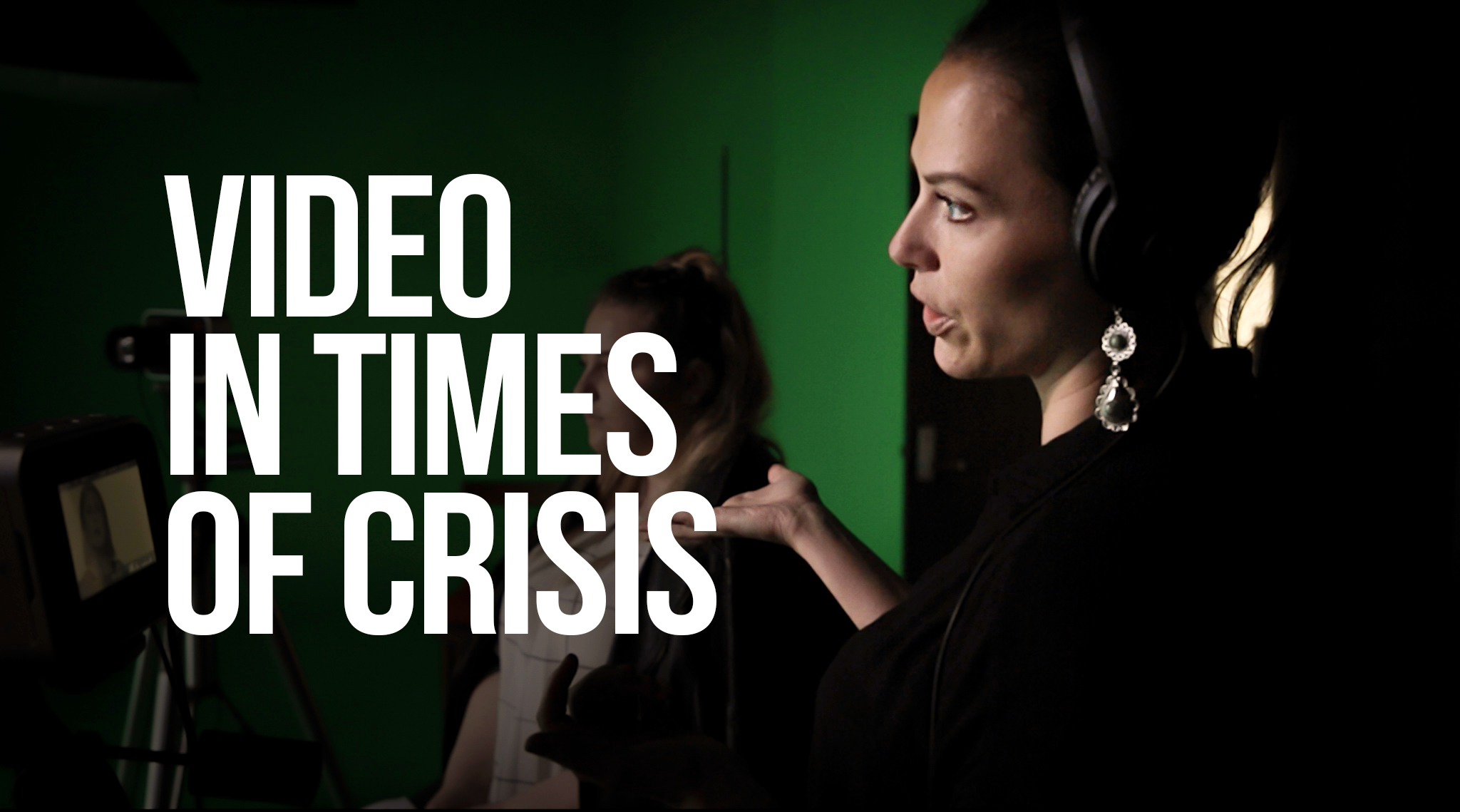

Blog: Video in times of crisis

As the business landscape continues to change with the spread of COVID-19, the way that we communicate with each other must also swiftly change to adapt. In uncertain times, one thing is certain, people are now going to be consuming more online video content than ever before.
Video will be unrivalled as a communication tool through the COVID-19 crisis situation. With fewer public gatherings, restricted face-to-face meetings, and many workplaces implementing partial or full work from home measures, what we stand to lose is the human element of communication; one which can bring power to a message, demonstrate leadership and offer assurance in uncertain times.
Here are just a few simple ways video can be used as a tool to continue to communicate effectively in the weeks and months ahead. You can also check out our vlog on the topic here.
Pre-recorded internal communications
Leaders, in particular those with remote or national staff bases, or large local workforces, will have a need to maintain a presence with their employees at a time when face-to-face contact will be limited. Video is a personal, authentic way to communicate in the absence of face-to-face contact, and offers the ability to limit miscommunication and misunderstanding of the written word. It also allows a leader to display empathy and offer reassurance, at a time when both are crucial.
Video news releases
The media are working under increased pressure, while also undertaking their own social distancing practices. This makes journalists attending organised media calls less likely, outside of those arranged by Government or health authorities. This has led to the broadcast media being more open to receiving supplied video content including interview grabs and general overlay footage, which can be easily be packaged into a story. This not only ensures face-to-face contact is kept to a minimum, but reduces the strain on leaders’ time resources.
Online media training
Face to face media training is proving more challenging in this environment. However, using video conferencing technologies ensures organisational spokespeople and business leaders are still able to prepare for media announcements or media interest in how COVID-19 is impacting their organisation.
Live streaming
With the cancellation of events and many social gatherings, the live streaming of events with heavily reduced numbers of guests or, indeed, no guests at all, will be common. Live streaming can offer a cost-effective alternative to disseminate information amongst event stakeholders.
Video conferencing
While not a new technology by any means, online video conferencing is an efficient and cost-effective way to replace traditional in-person stakeholder meetings. Most computers have the ability, via an in-built camera, to capture high quality video , however additional camera hardware if required is relatively inexpensive and easy to use. While free video conferencing options are available, paid plans (such as Zoom Pro) can offer the ability to not only interact face-to-face with participants but also simultaneously screen share, allowing the host to share documents, videos and other online content. Other real time features include group chat and whiteboarding.
Facebook Live
For consumer facing businesses, the Facebook Live feature offers the opportunity to better connect to consumers directly. Rather than a one-sided communication or post, Facebook Live is designed to be two-sided, and interactive. If done well, it can provide an opportunity to have truly engaging and meaningful communication with consumers, and answer the questions they want answered.
If you require tailored, specific video support from Hughes and would like to discuss your organisation’s communications response, please call our team on 08 8412 4100.
Recent News
- Blog: Navigating the changing media landscape
- $48M affordable housing hub revives beachside site
- Covid success story: SA digital transformation start-up expands interstate
- Industry leader Mark Smith appointed National Pharmacies CEO
- Mellor Olsson appoints new CEO
- Indonesia AirAsia touches down in Adelaide, enabling affordable connectivity across Asia via Bali
- Playgroup reimagined: Elders and children connect at ACS's Aboriginal aged care home
- Apartment living reaches new heights with $120 million Parkline development topping out
- A Fresh Take on Strawberries: Premium Packaging that Looks as Good as it Performs
- Paper & board packaging leader unboxes new global HQ in Adelaide
- Lutheran Homes Group brings its high-quality aged care to regional Victoria in historic expansion
- Blog: The growing AI threat - what it can mean for your brand and reputation
- CH4 Global named as one of the world’s top Sustainable Development Goal leaders
- Scotch AGS Vietnam’s inaugural SACE graduates go global
- Gen Z and the future of AI
- Qantas international services return to Adelaide
- Blog: Let’s get (a)political: all you need to know about elections and public relations
- The world’s most valuable dog toy revealed in the lead up to Guide Dogs Day
- Skytrax names Adelaide as best regional airport in Australia & Pacific region
- Indonesia AirAsia To Touch Down in Adelaide for the first time in June Fares on sale today starting from just AUD$199*!








